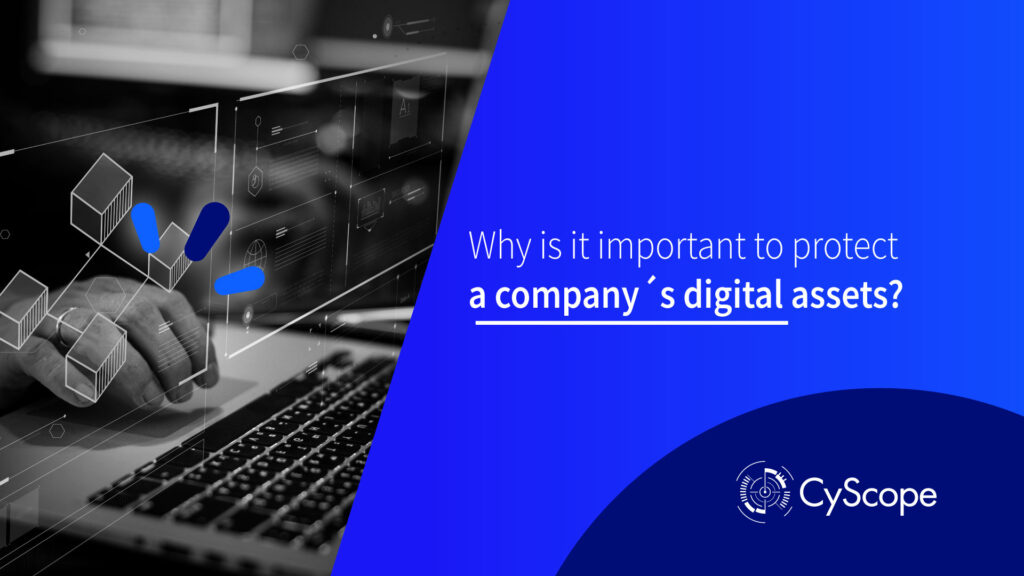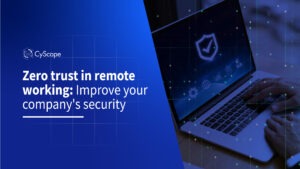In this new, digital, and modern world, the topic of digital assets has become the backbone of any company’s operations. They transcend mere files stored on a hard drive; they represent the intangible value and essence of a brand in the online realm. From customer databases and financial records to intellectual property like software, multimedia content, and web designs, digital assets encompass a wide array of invaluable resources essential for modern enterprises.
These assets are indispensable, not just for their direct contribution to company operations, but also for their profound impact on brand reputation and image. A well-designed website, for instance, often serves as a potential customer’s initial impression of a company. On the other hand, customer databases contain vital information that can be targeted by numerous cybercriminals.
It’s crucial to note that as the volume and significance of these digital assets grow within companies, so does the risk of threats such as data theft and cyber piracy. Cybercrime is a booming business that knows no bounds; from small startups to multinational corporations, all are susceptible.
Learn about the three primary threats to digital assets
- Cyberattacks: Cyberattacks, such as phishing, ransomware, and denial-of-service attacks, are designed to infiltrate security systems, steal sensitive data, or disrupt business operations. These threats may target a specific company or be part of larger campaigns exploiting common software vulnerabilities.
- Malicious Software: Malware, including viruses, worms, and trojans, represents one of the most potent threats. It can infiltrate corporate systems through emails, downloads, or infected USB devices. Once embedded, malware has the capability to compromise files, steal data, or even seize complete control of computer systems.
- Human Errors: Mistakes made by employees or users are among the most challenging to control, and such oversights can lead to the loss or exposure of digital assets. These mistakes range from inadvertently sharing sensitive information on public platforms to falling victim to phishing email traps requesting login credentials.
Why is it important to implement strategies to safeguard digital assets?
Implementing strategies to protect digital assets is fundamental due to the central role these assets play in the operations and overall strategy of any modern enterprise. In today’s digital landscape, where information is considered one of the most valuable assets, safeguarding data and digital infrastructure has become a critical necessity. The loss or theft of data can have devastating consequences, including significant financial losses, damage to the company’s reputation, and a loss of trust from customers and partners. Moreover, breaches of digital assets can often lead to non-compliance with data protection regulations and laws, potentially resulting in legal and financial penalties.
Read also: Ethical Hacking: A Cornerstone for Online Security
Strategies for protecting digital assets
Security policies
Developing and implementing stringent security policies is fundamental for safeguarding digital assets. This mandates the use of strong passwords that incorporate a combination of letters, numbers, and symbols. Furthermore, these passwords should be regularly changed to mitigate unauthorized access. It’s important to note that Two-Factor Authentication (2FA) adds an extra layer of security by requiring users to provide two different forms of identity verification before accessing sensitive information.
Software updates and system maintenance
Maintaining up-to-date software and operating systems is essential for safeguarding digital assets against vulnerabilities. Cybercriminals frequently exploit security flaws in outdated software to infiltrate systems. Therefore, companies should implement software update policies that ensure timely installation of security patches and critical updates.
Employee education and training
Employees often constitute the weakest link in a company’s security chain. That’s why it’s crucial to provide regular training on cybersecurity principles, including identifying phishing attempts, securely managing data, and emphasizing the importance of security practices such as not sharing passwords.
Continuous monitoring and incident response
Implement tools and protocols for continuous monitoring of systems and networks to detect any suspicious or malicious activities. This includes using intrusion detection systems, audit logs, and network traffic analysis tools. Additionally, it’s recommended to establish a security incident response plan so that, in the event of a breach, you can act swiftly to mitigate damage, identify root causes, and prevent future breaches.
Data backup and recovery
Establish policies and procedures for regularly backing up critical data and ensure the ability to recover it in case of loss or damage caused by hardware failures, ransomware attacks, or natural disasters. Backups should be stored securely and tested regularly to verify their recoverability.
CyScope: The key component for safeguarding digital assets
CyScope is an innovative tool that plays a crucial role in improving the security of digital assets within organizations. Its primary objective is to conduct thorough assessments of an organization’s information security and digital infrastructure. By identifying vulnerabilities and threats in real-time, CyScope empowers businesses to anticipate and respond to potential cyber attacks. Learn more about our approach by requesting a DEMO in the image below.





